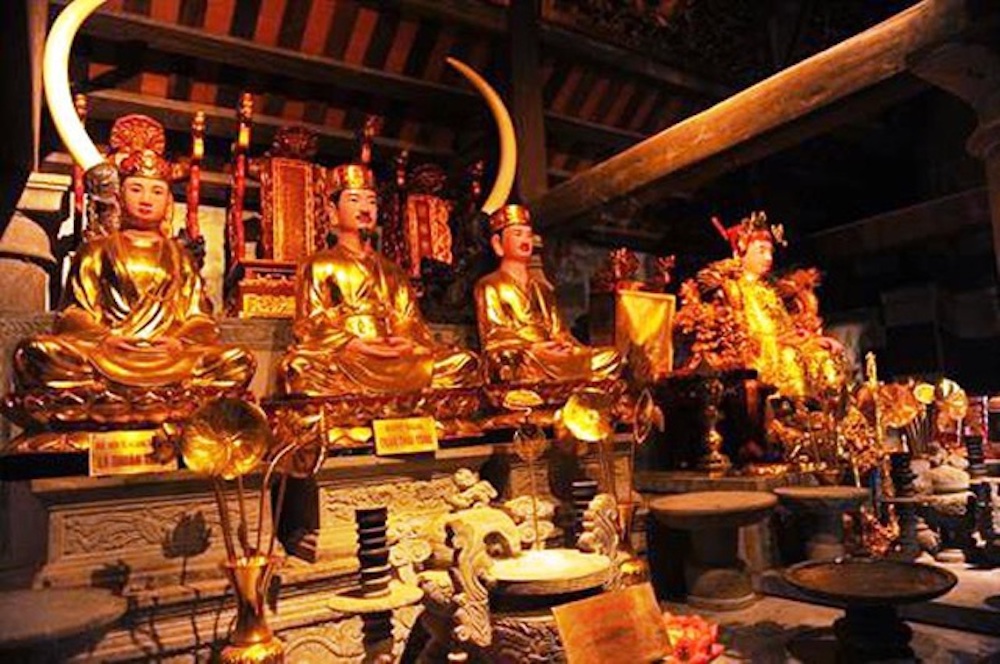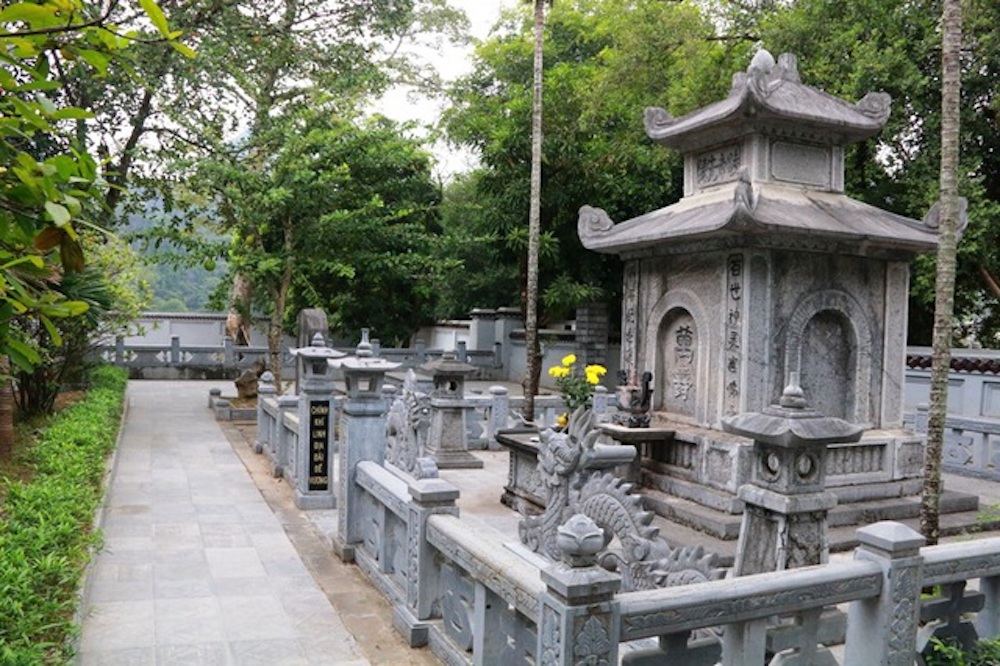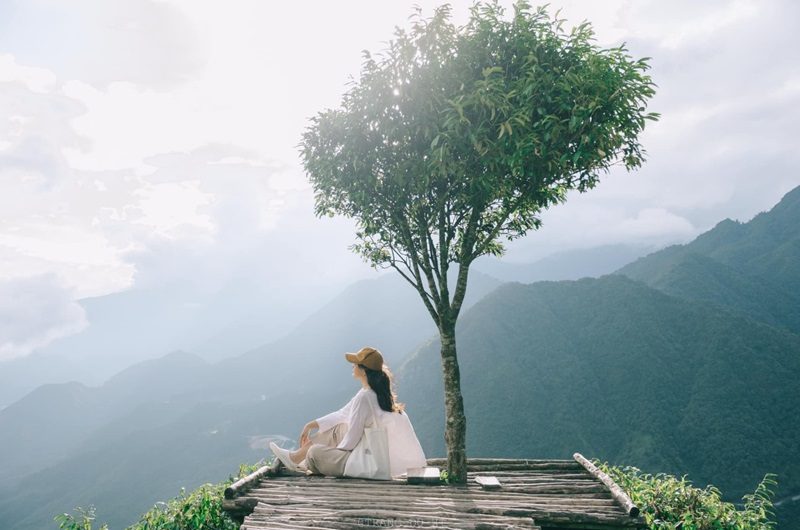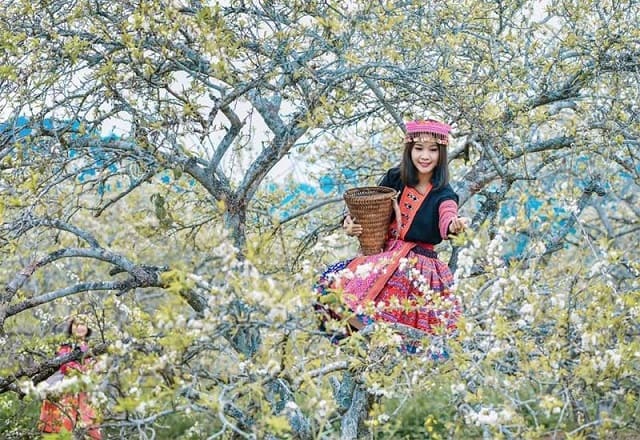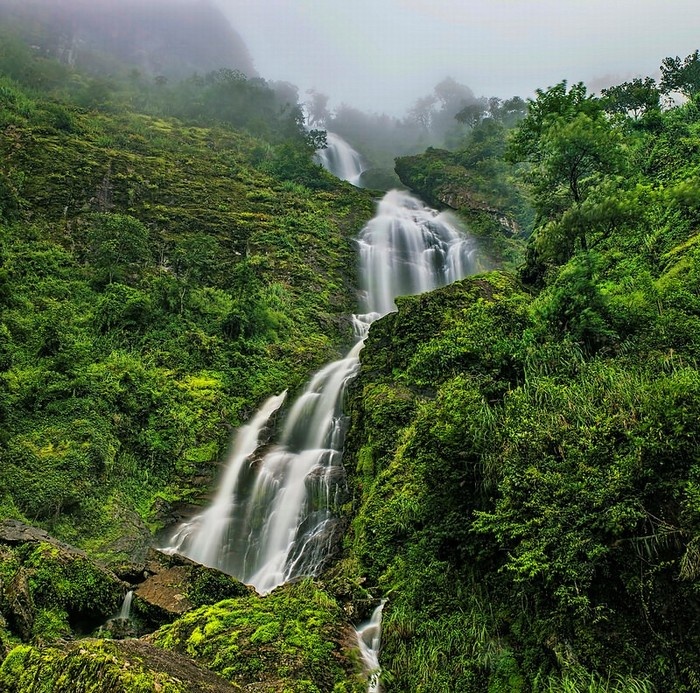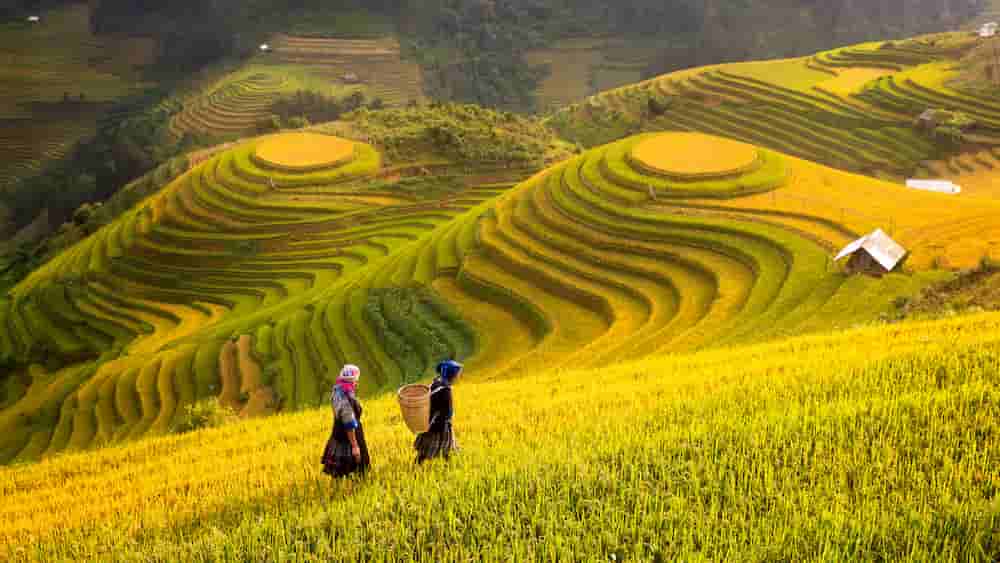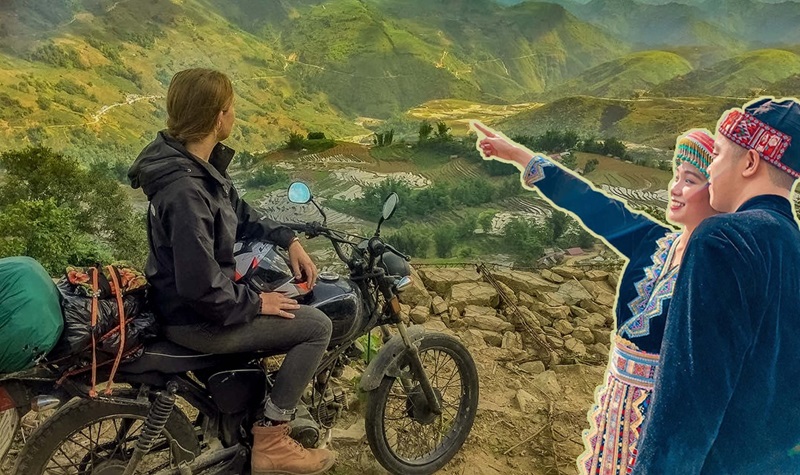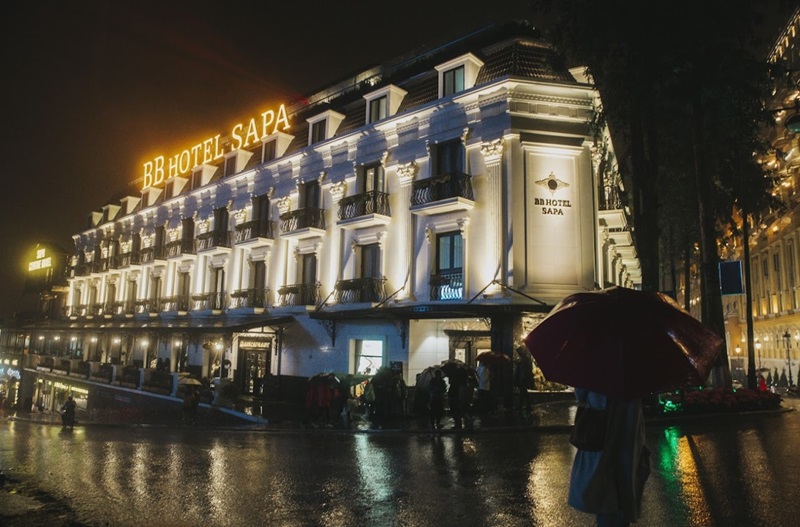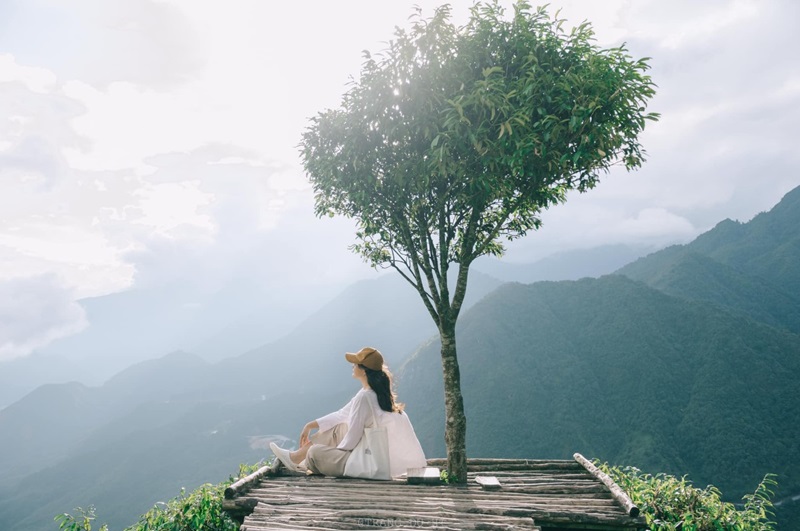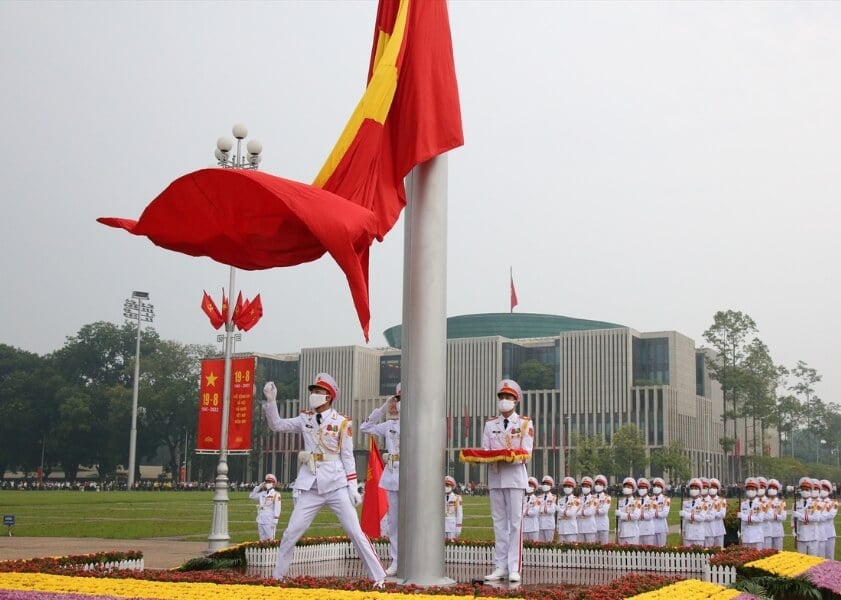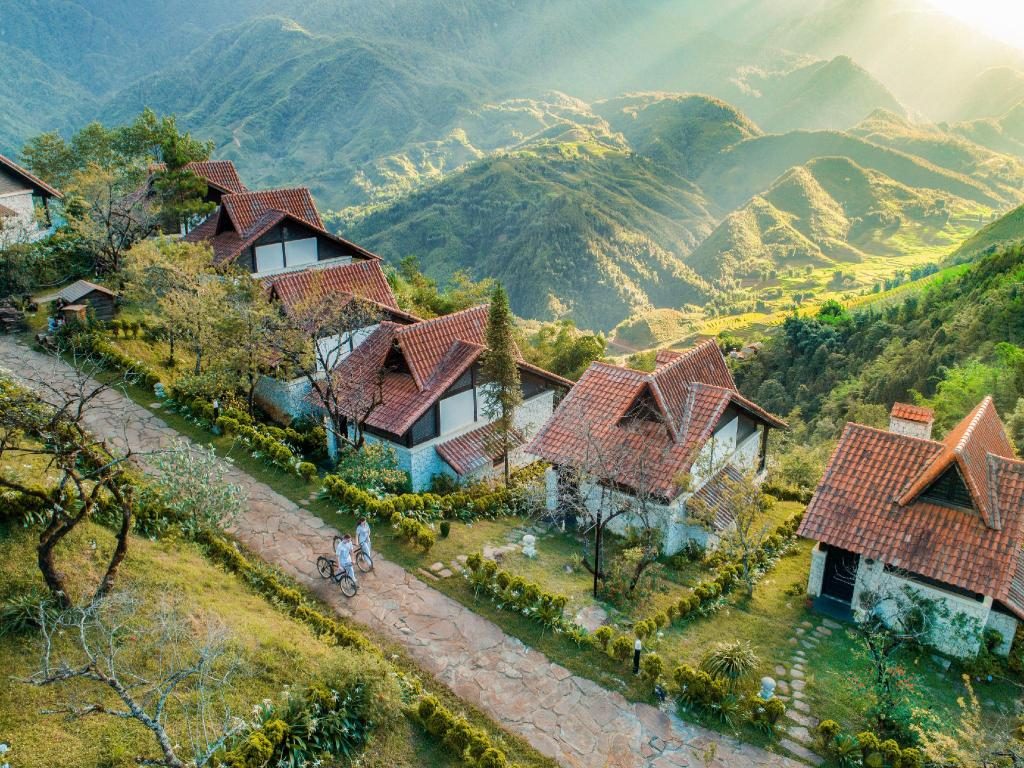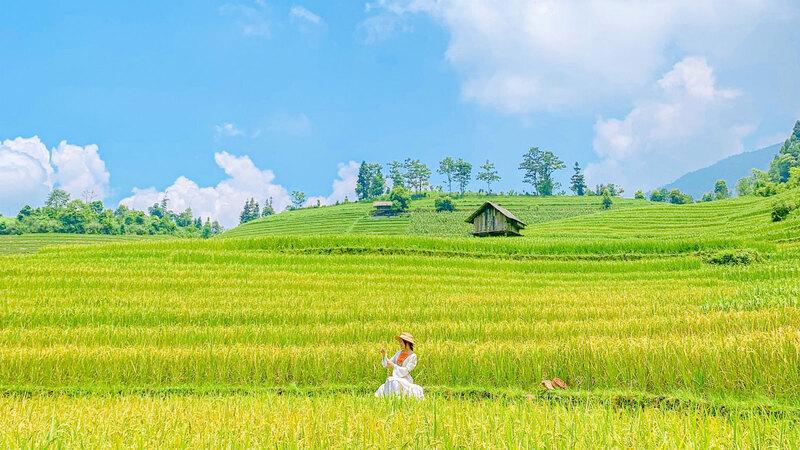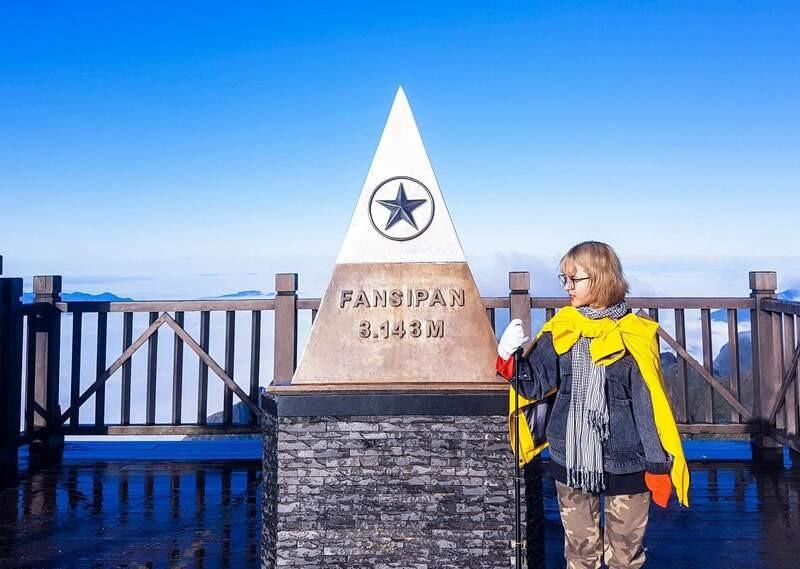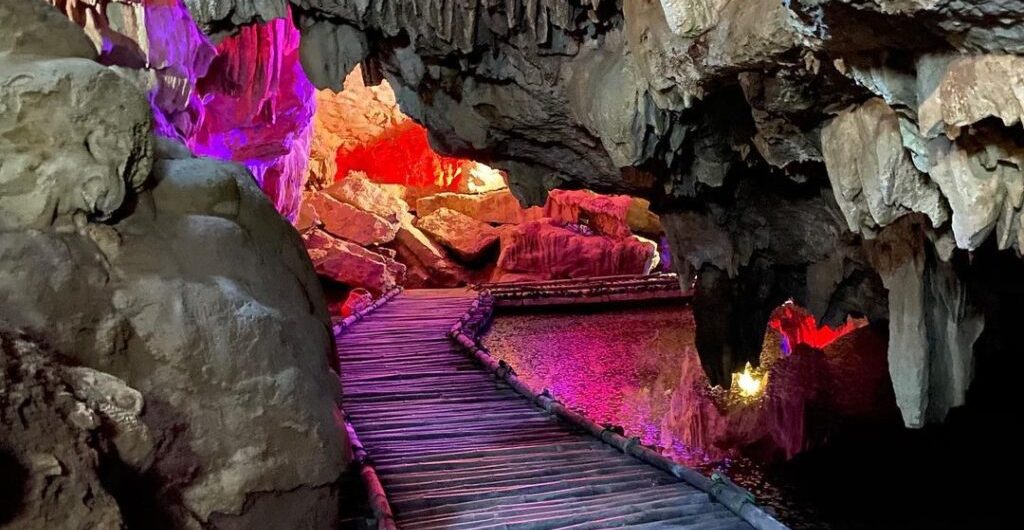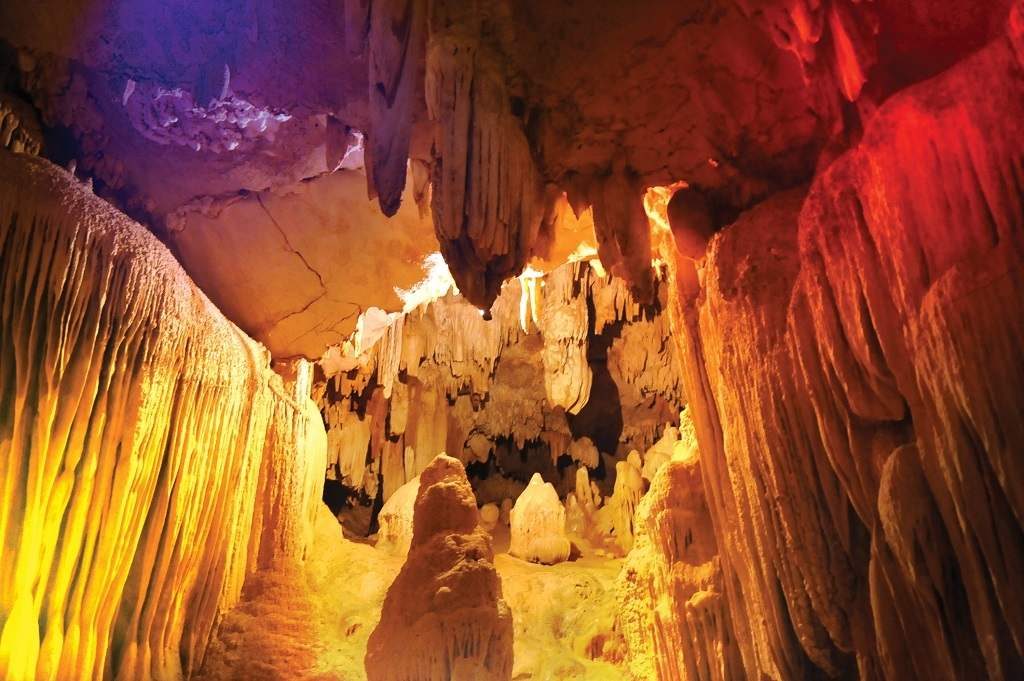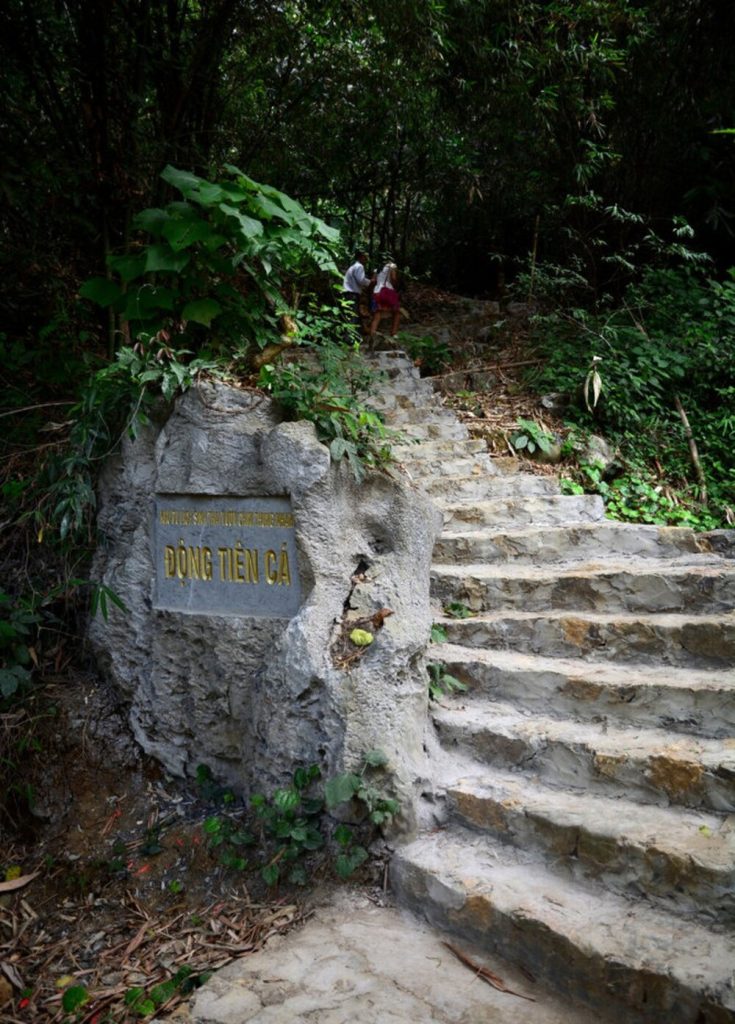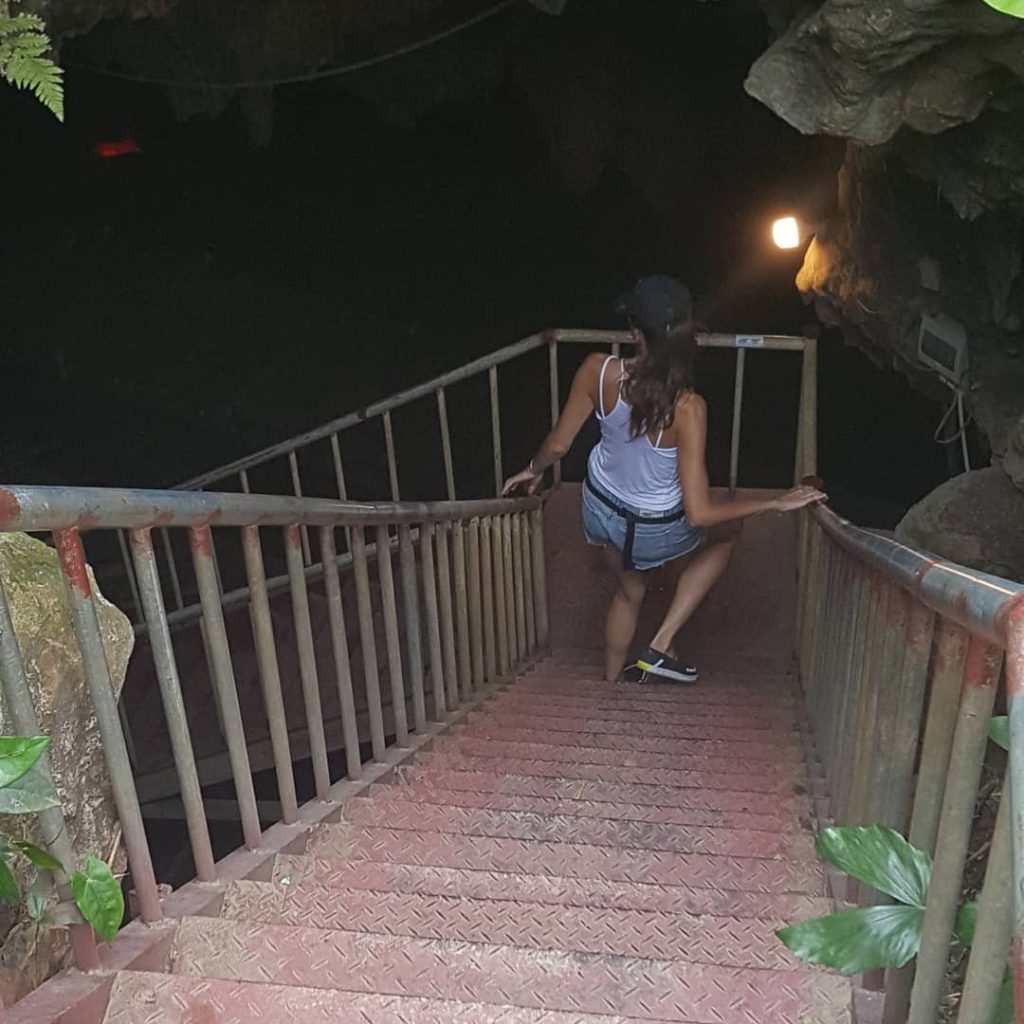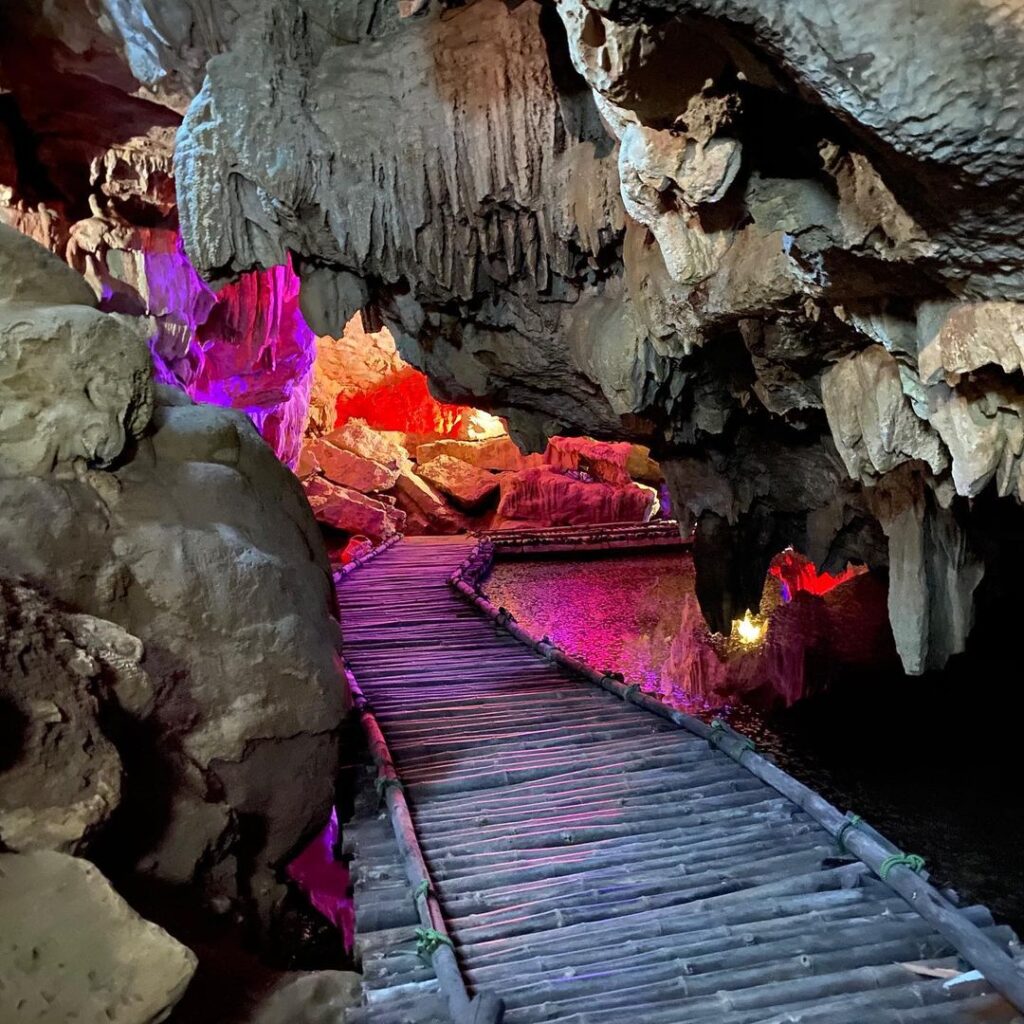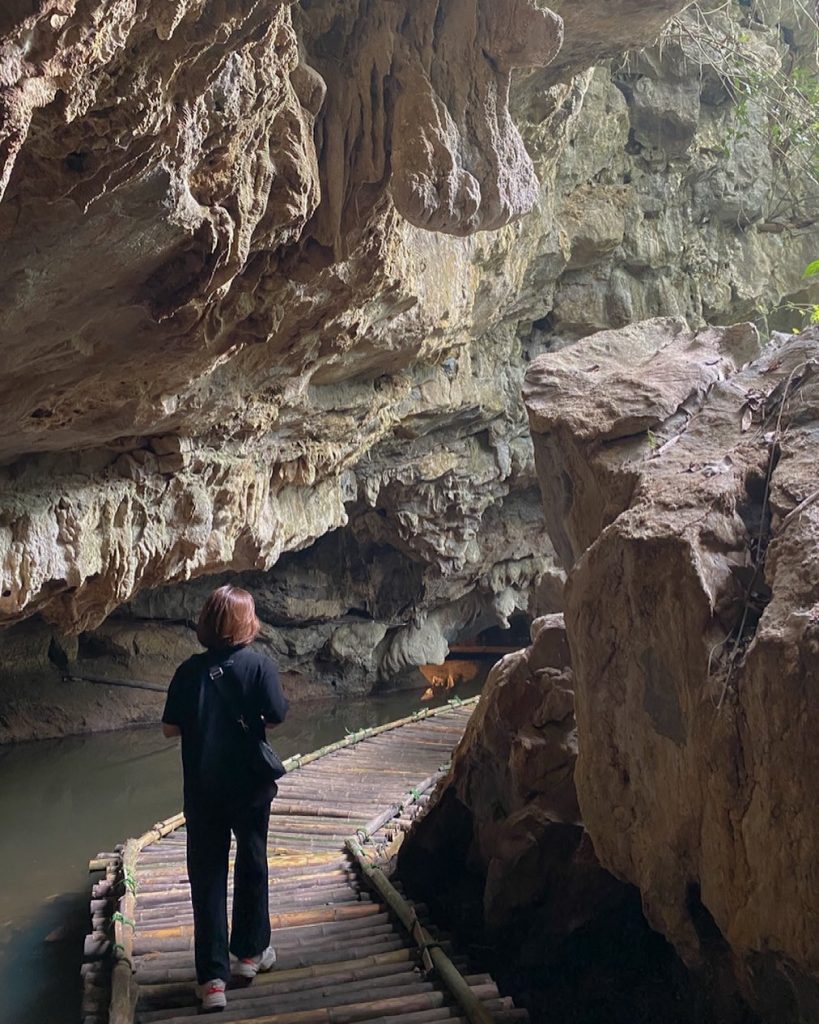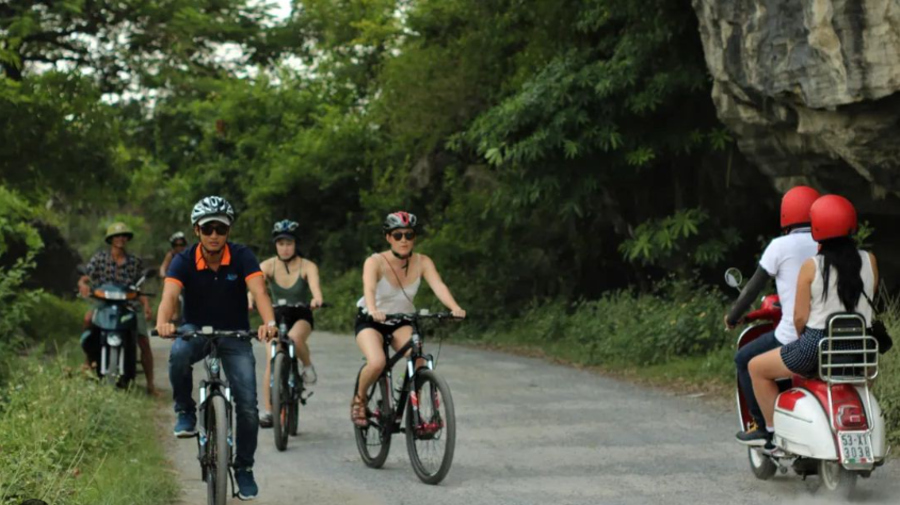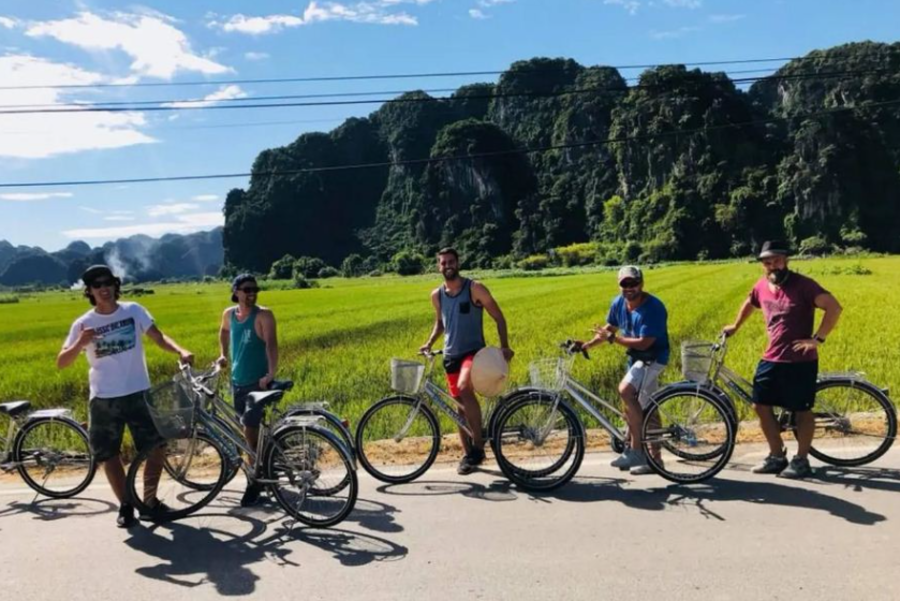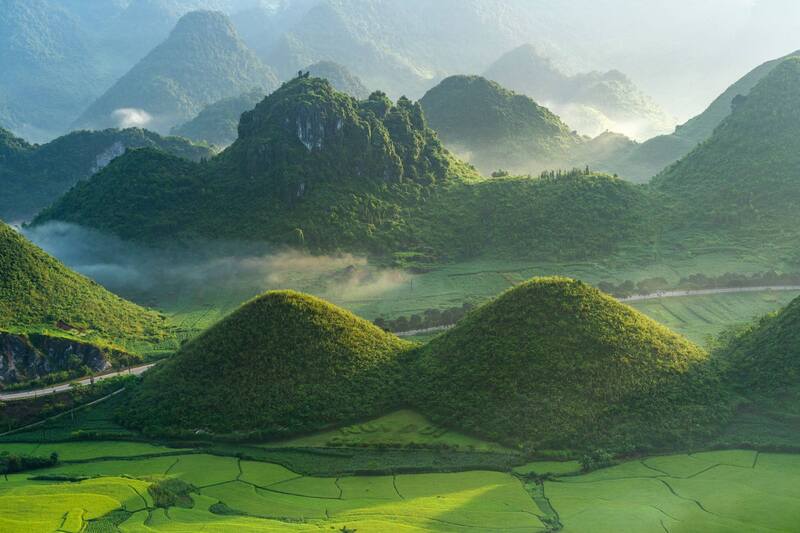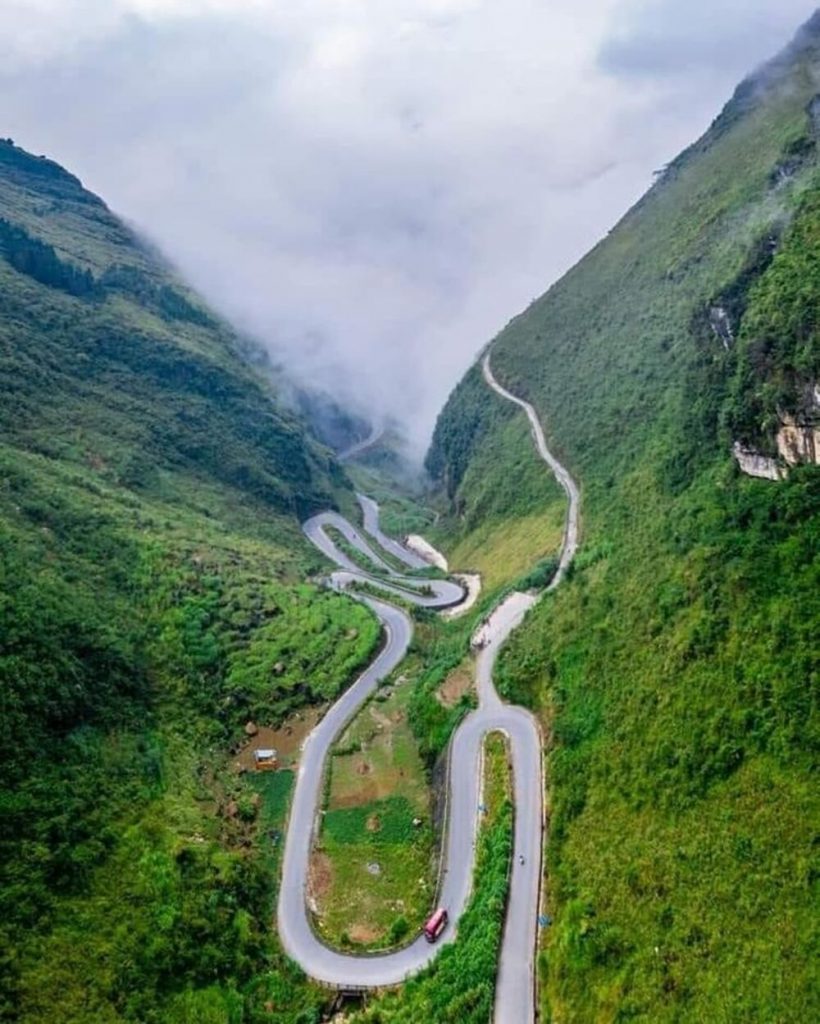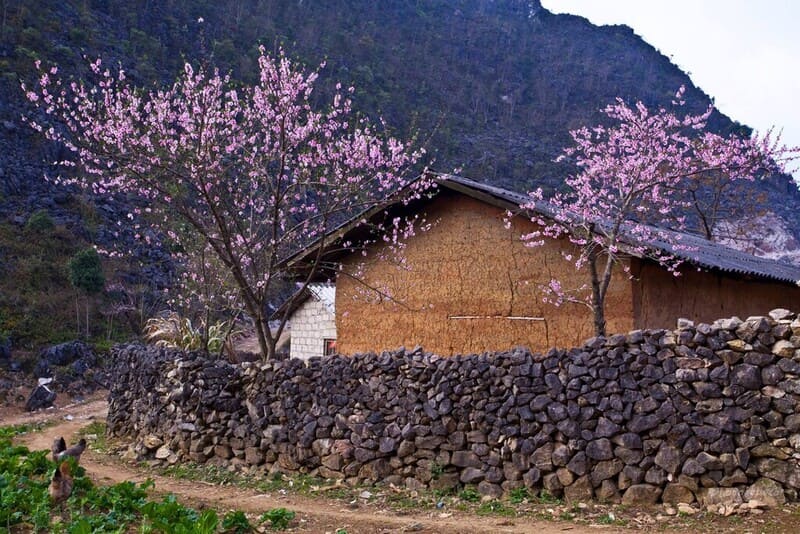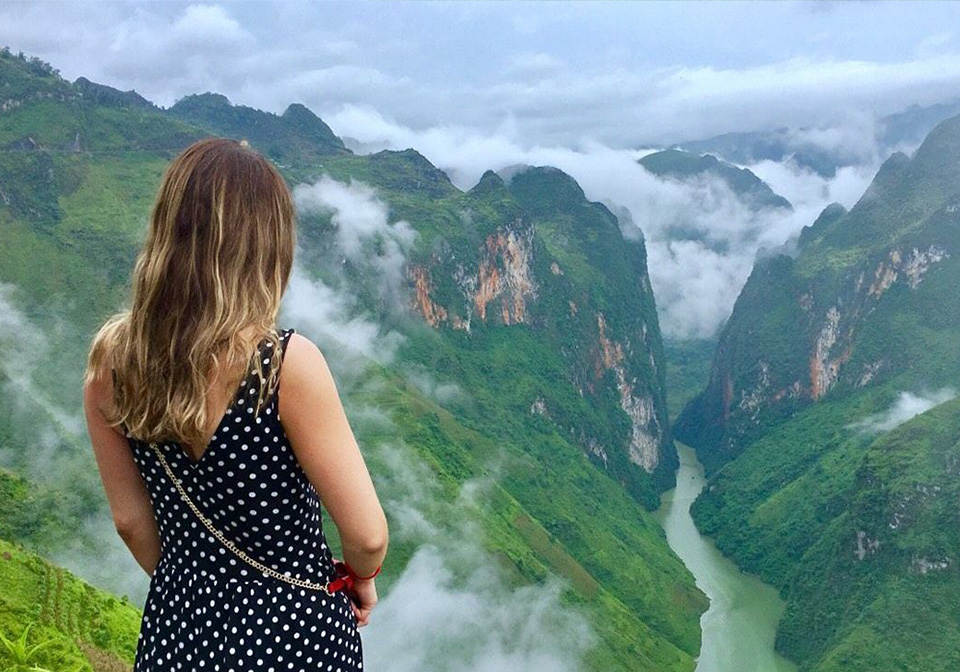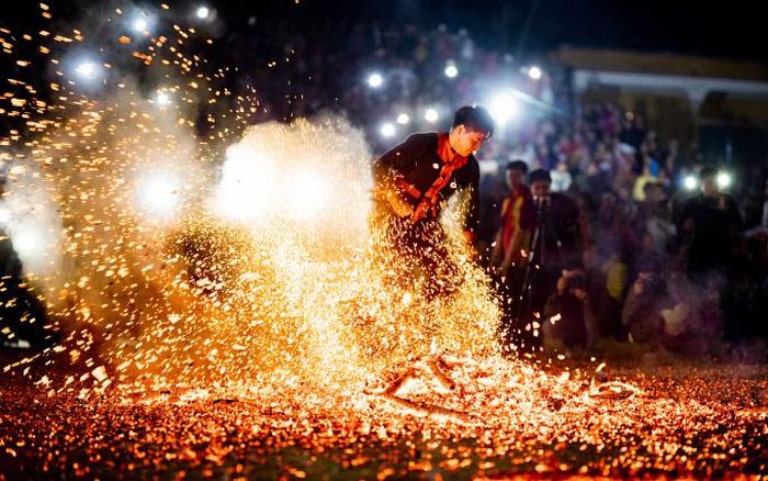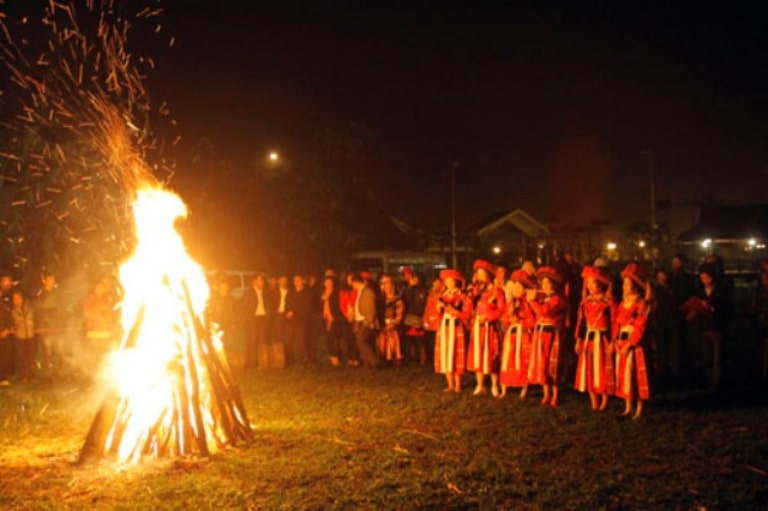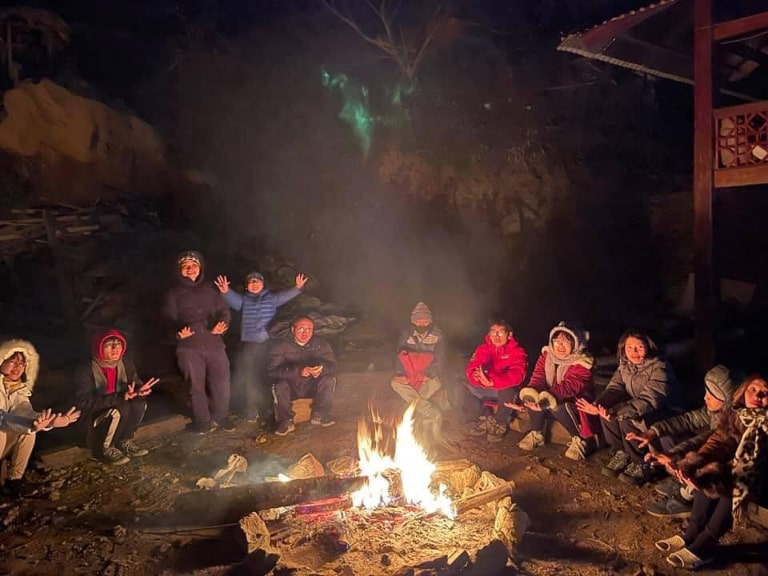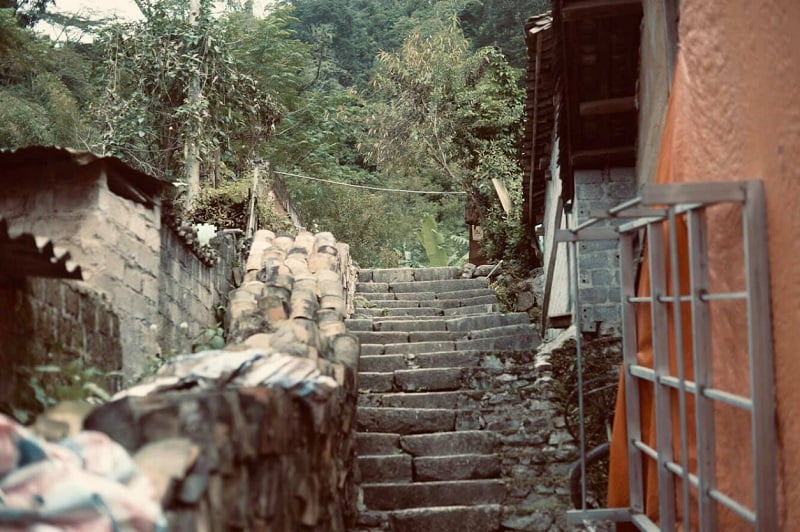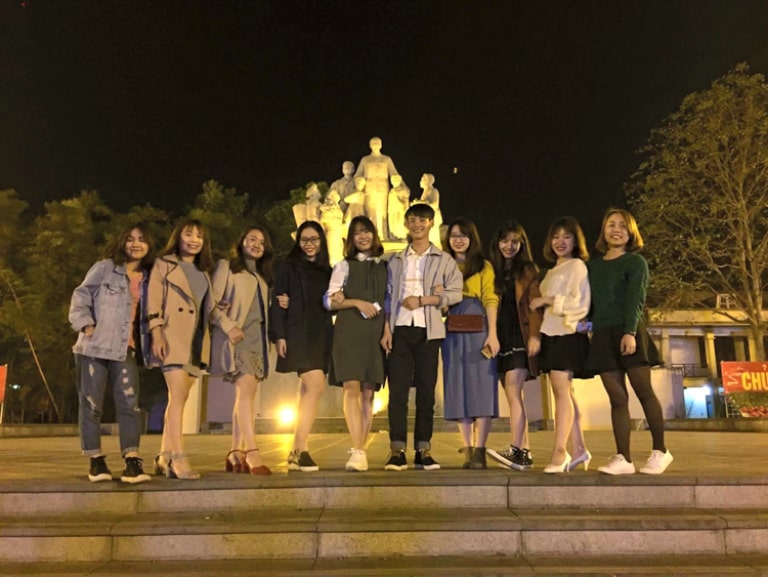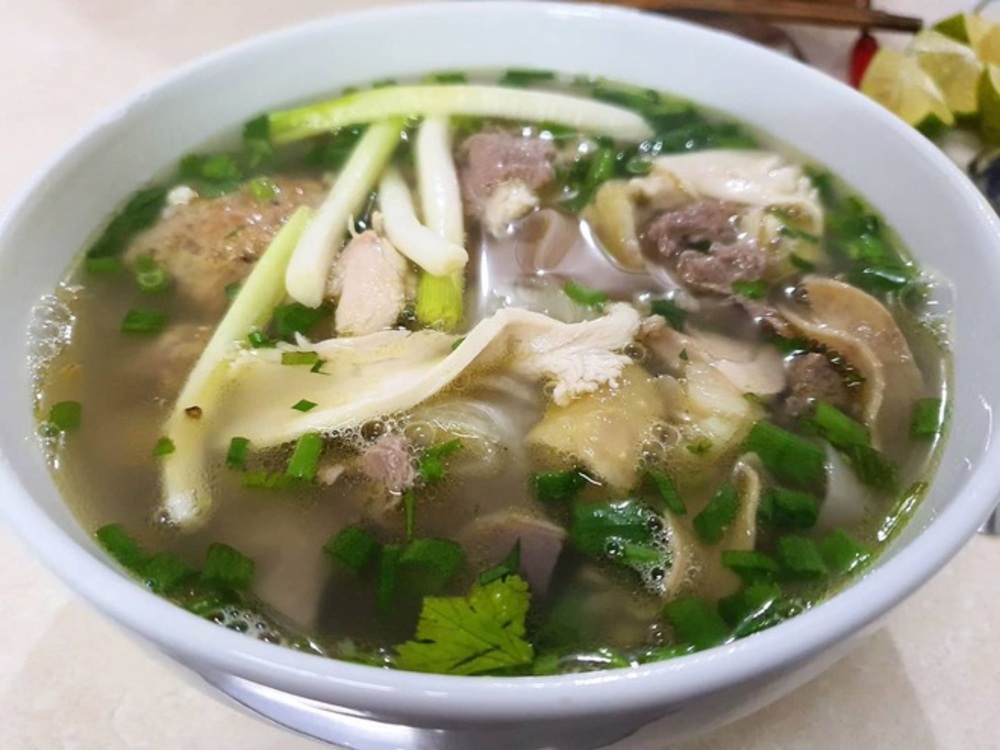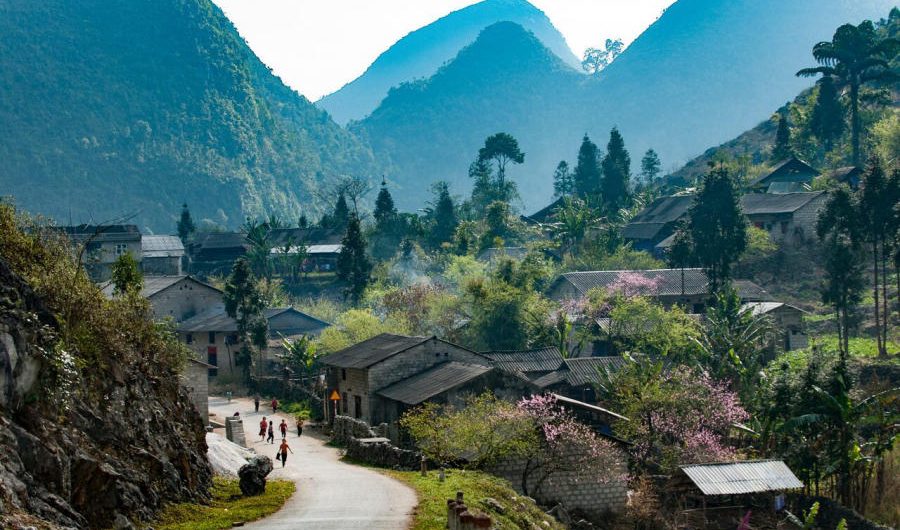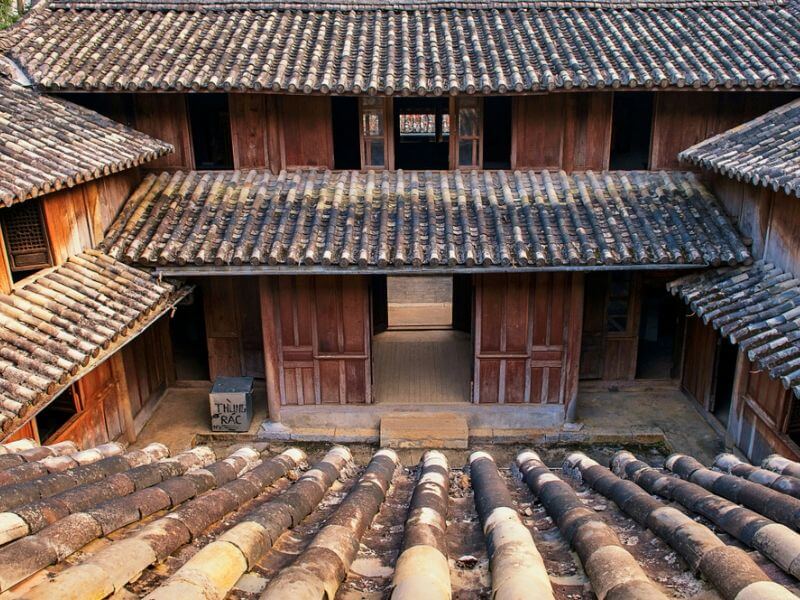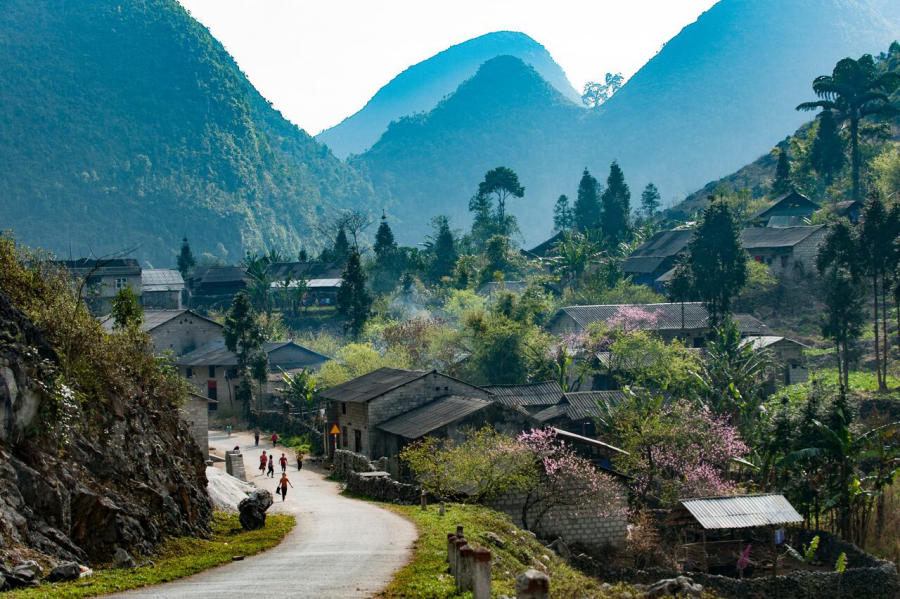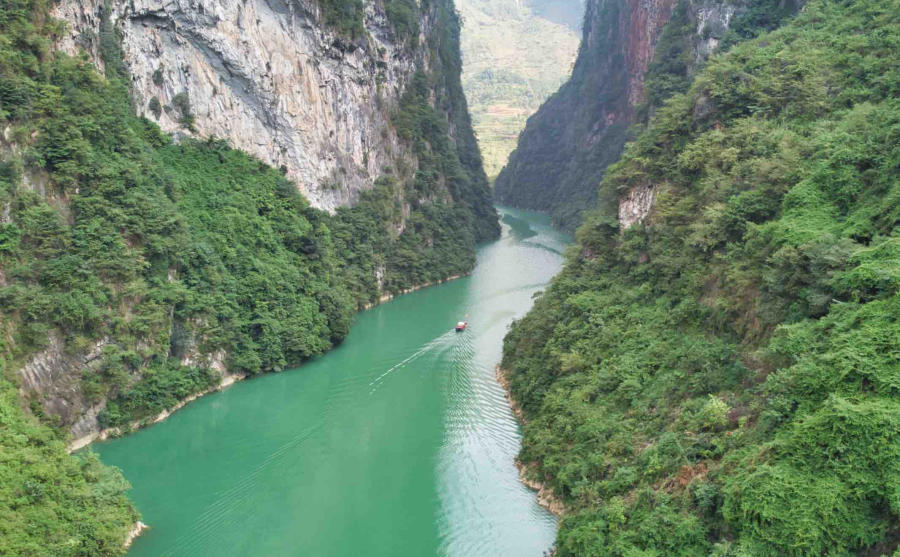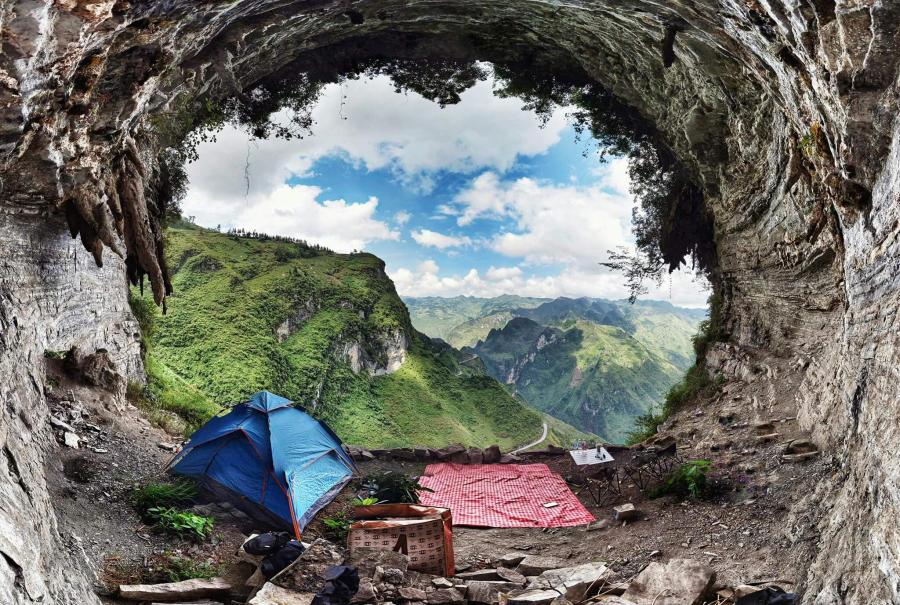Sun World Fansipan Legend is an incredibly famous destination; when SaPa is mentioned, everyone knows about this place. It not only stands out with its magnificent and mystical natural scenery, but it is also known as the “meeting place of heaven and earth,” bringing together breathtaking beauty that astonishes visitors. SaPa’s allure is not just in its natural beauty but also in its grand spiritual structures, making it an ideal place for tourists to visit, enjoy the scenery, and pray for peace. Join DanangPrivateCar.com’s in exploring the Sun World Fansipan Legend to fully appreciate its unique beauty!
Introduction to Sun World Fansipan Legend
Sun World Fansipan Legend, located in the southwest of SaPa town, is an entertainment, cable car, spiritual culture, and luxury resort complex developed by Sun Group. Situated at an altitude of 3,143 meters on the peak of Fansipan, it offers a panoramic view of the magnificent natural beauty of the Northwestern mountains and forests. The climate at Sun World Fansipan Legend is temperate, cool, and pleasant all year round, which is a significant advantage that attracts tourists to visit and enjoy the area.
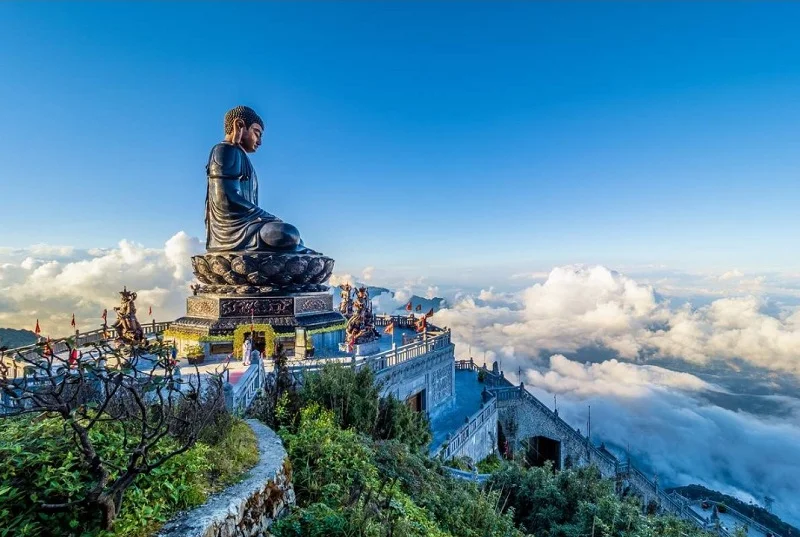
The undeniable natural scenery here has drawn many visitors; however, at Sun World Fansipan, you can also experience the unique cultural and spiritual aspects that are exclusive to SaPa.
Guide to Getting to Sun World Fansipan Legend
Traveling to SaPa
Typically, tourists traveling to SaPa depart from Hanoi. You can get there by bus, motorbike, or tourist car, among other options. DanangPrivateCar.com has an article detailing the various ways to travel from Hanoi to SaPa, which you might find useful.
For the most convenience, you can book our private car service from Hanoi to SaPa. Our service includes door-to-door pick-up and drop-off, professional drivers, and the flexibility to rest or visit tourist attractions along the way if you wish.
Traveling from SaPa to the Fansipan Cable Car
Sun World Fansipan is located about 3 km from the center of SaPa town. There are two ways to get there: the Muong Hoa mountain-climbing train or by private vehicle.

The Muong Hoa mountain-climbing train is a wonderful experience that many visitors enjoy when coming to SaPa. If you choose the Muong Hoa mountain-climbing train, it takes about 8 minutes to reach your destination. While on the train, you can admire the colorful Muong Hoa Valley.
If you prefer not to take the mountain-climbing train, you can opt to travel by private car or taxi to the cable car station. However, traveling by car will take longer than the Muong Hoa mountain-climbing train.
Traveling from the Cable Car to the Fansipan Summit
From the cable car station, you will take the cable car to Fansipan – the roof of Indochina. The cable car ride to the Fansipan summit takes about 15 minutes, during which you can admire the natural beauty. The modern cable car system, recognized as the longest three-rope cable car in the world, stretches approximately 6,293 meters and is known as the most advanced in Asia.
Fansipan Legend Cable Car Ticket Prices
The Fansipan Legend cable car, constructed under the supervision of Sun Group, offers a modern and breathtaking experience. The 20-minute ride allows you to admire the stunning beauty of the Muong Hoa Valley, which changes its vibrant colors with the seasons, creating unforgettable memories.
The latest updated ticket prices for the Fansipan Legend cable car are as follows:
- Cable Car Tickets:
- Adults: 750,000 VND
- Children: 550,000 VND
- Cable Car Tickets for Local Residents:
- Adults: 550,000 VND
- Children: 350,000 VND
- Muong Hoa Mountain-Climbing Train Tickets:
- 100,000 VND per passenger
- One-Way Mountain-Climbing Train Tickets:
- 70,000 VND per passenger (for both adults and children)
See more details about the article: Latest Fansipan Sapa Cable Car Ticket Prices 2024
What to Discover at Sun World Fansipan Legend?
Fansipan Legend Cable Car
The Fansipan Legend cable car, invested in by Sun Group, features modern, internationally acclaimed design and is the longest three-rope cable car in the world, making its debut in Asia.
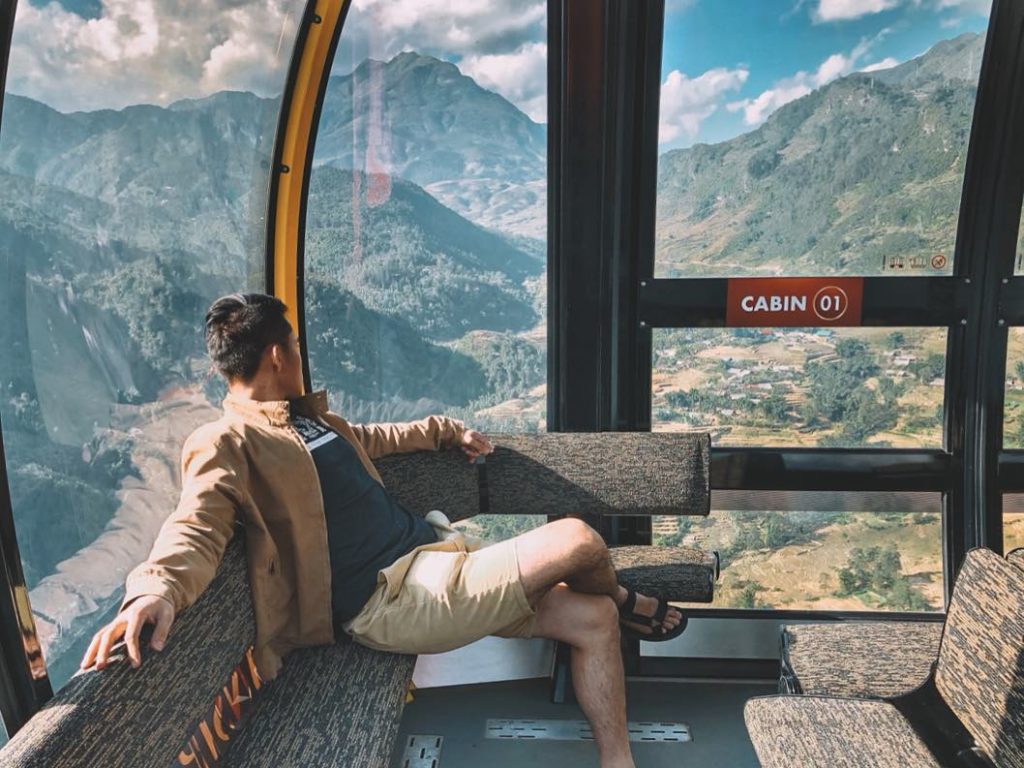
The journey to the summit of Fansipan takes about 20 minutes. Despite the short duration, you have ample time to admire the colorful Muong Hoa Valley. Depending on the season, Muong Hoa showcases different unique beauties. Visitors can glide through the mystical fog, over terraced rice fields that stretch across the hills, and through the majestic and mysterious Hoang Lien Son Mountain Range. A visit here to witness this beauty firsthand will not disappoint you.
Muong Hoa Mountain-Climbing Train
The Muong Hoa mountain-climbing train is another attraction that draws many tourists to SaPa. The interior design of the train is decorated in a classic European style, predominantly in red, emphasizing luxury. It is an ideal place to take stunning and memorable photos, as every corner offers a picturesque view. The train moves slowly, allowing passengers to comfortably enjoy the beautiful Muong Hoa scenery. From above, you can see thousands of blooming flowers, creating a film-like experience that is truly wonderful and unique to SaPa.
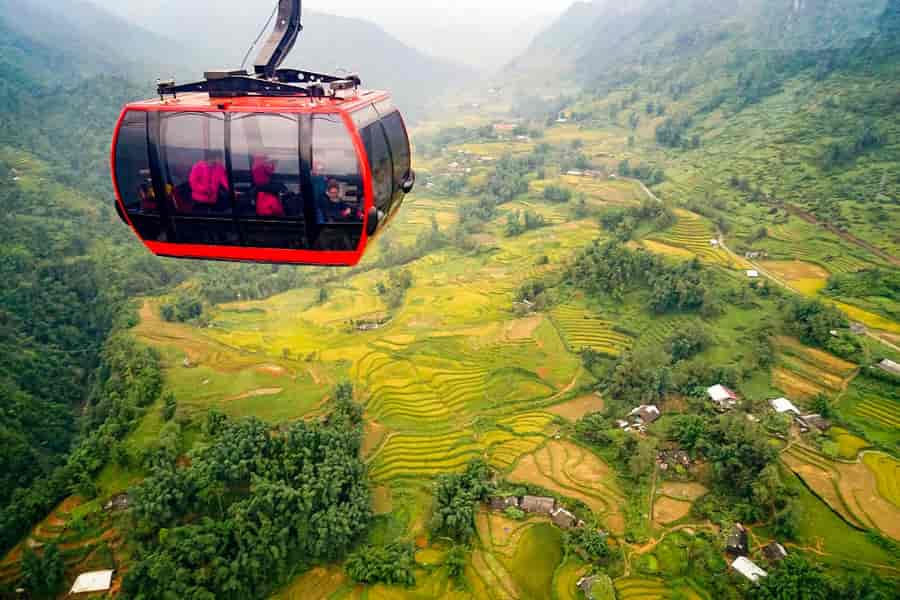
Currently, the Muong Hoa mountain-climbing train remains one of the longest mountain-climbing trains in the world. The two trains, made by a Swiss company, each have a length of about 20 meters and a width of 3 meters, moving at a speed of approximately 5 meters per second. Each carriage can accommodate up to 200 passengers.
Bich Van Zen Monastery
It must be acknowledged that the Sun World Fansipan Legend complex is among the most modern spiritual tourism sites in Vietnam. Here, you can admire the tallest bronze statue of Buddha Amitabha in Vietnam. In addition to Bao An Zen Monastery Fansipan, the site also features Bich Van Zen Monastery. Upon arrival, you are greeted by Tran Dynasty architecture with terraced steps and the Tam Thanh Mẫu Temple, symmetrically opposite the Duc Thanh Tran Temple, which is exceptionally beautiful. From here, you can view the Northwestern mountains from an altitude of 3,038 meters and participate in Buddhist ceremonies inside.
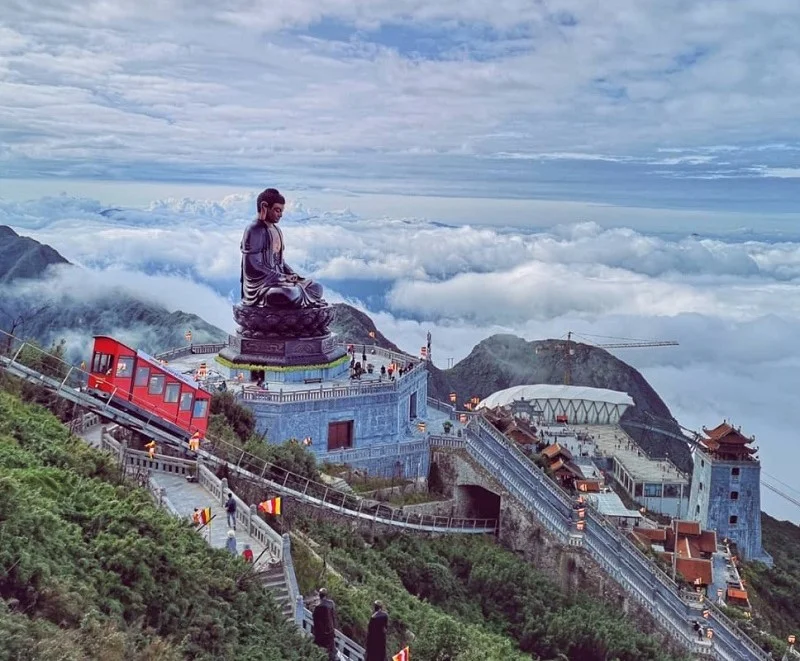
Moreover, do not miss the grand architecture of the 11-story Bao Thap, entirely designed from stone. Notably, there is a meticulously crafted bronze lotus statue placed at the center of the tower’s summit.
Culinary Paradise at Sun World Fansipan Legend
Within Sun World Fansipan Legend, you can’t miss the unique culinary area that you should try, including Vân Sam Buffet Restaurant, Đỗ Quyên Restaurant, and Du Soleil Café, among others. These venues will certainly not disappoint you.
Do Quyen Restaurant
Located on the first floor of the Fansipan station, Đỗ Quyên Restaurant can accommodate 360 people. Here, you can enjoy food and drinks that feel like they are floating among the white clouds of SaPa. The restaurant offers a variety of Asian and European dishes while allowing you to admire the stunning scenery at an altitude of 2,600 meters. Some of the most popular dishes include meat sandwiches, spaghetti, pizza, and fried chicken wings, all of which are flavorful and delicious.

Van Sam Buffet Restaurant
Vân Sam Buffet Restaurant is situated at the Hoang Lien cable car station, offering an enticing selection of 50 specialty dishes such as grilled meat, sweets, and fresh Northwestern vegetables. The interior of Vân Sam Buffet Restaurant features a modern design with spacious windows and walls lined with terracotta tiles, creating a cozy atmosphere. The buffet is reasonably priced at just 170,000 VND per adult, providing an excellent dining experience.
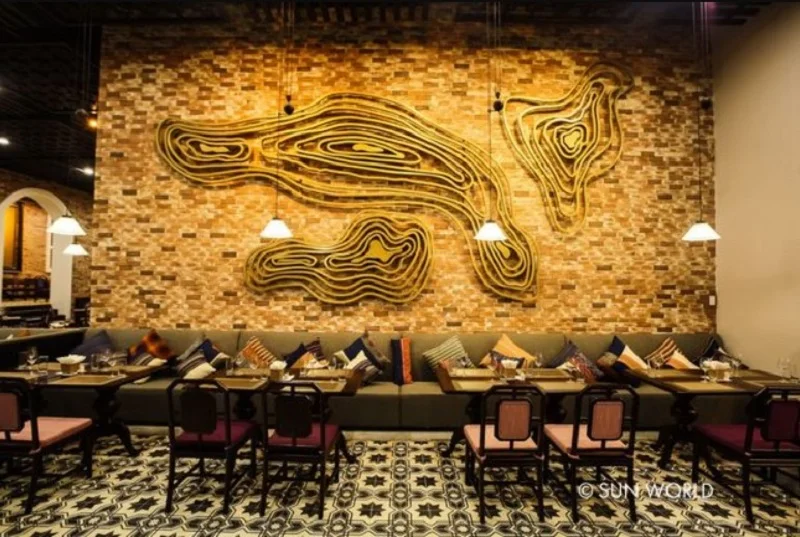
La Casa Pizza Restaurant
La Casa Pizza Restaurant is a must-visit place, ideal for family time and gatherings with friends to relax after a long day while enjoying new and unique dishes. The restaurant has a team of professionally trained and enthusiastic staff, along with highly skilled chefs ready to serve customers with unique and delicious food.
One standout dish that visitors must try is the pizza. The dough is well-mixed and allowed to rise, with the restaurant’s unique secrets ensuring a delicious pizza topped with enticingly prepared sauce.
Shopping at Sun Plaza Mall
Sun Plaza Mall, located at the SaPa station, showcases a variety of souvenirs such as bracelets, clothing, and specialty items that capture the essence of your journey in SaPa, Lao Cai. There are several reliable shops, including Tuyết Hùng Shop and Đá Chàm Shop.
Tuyet Hung Shop
When visiting SaPa, you’ll need to prepare essential items, especially if you plan to conquer Fansipan – the Roof of Indochina. Visitors can easily find Tuyết Hùng Shop, which offers quality products at reasonable prices, including clothes, brocade scarves, bracelets, hats, and raincoats.
Da Cham Shop
Located at the foot of the mountain in Hoang Lien Station, visitors can explore and purchase souvenirs for friends and family. The shop displays a wide range of products, including specialties, Dao herbal bath products, and honey jars.
Above is the most detailed article about the Sun World Fansipan tourist destination that Sinhtour has listed. We hope that the following article from Sinhtour will help you grasp the basic information to have the most complete journey to explore SaPa. Additionally, DanangPrivateCar.com currently offers many discounts for SaPa tour bookings. Please contact us now to book a tour at the best price.




